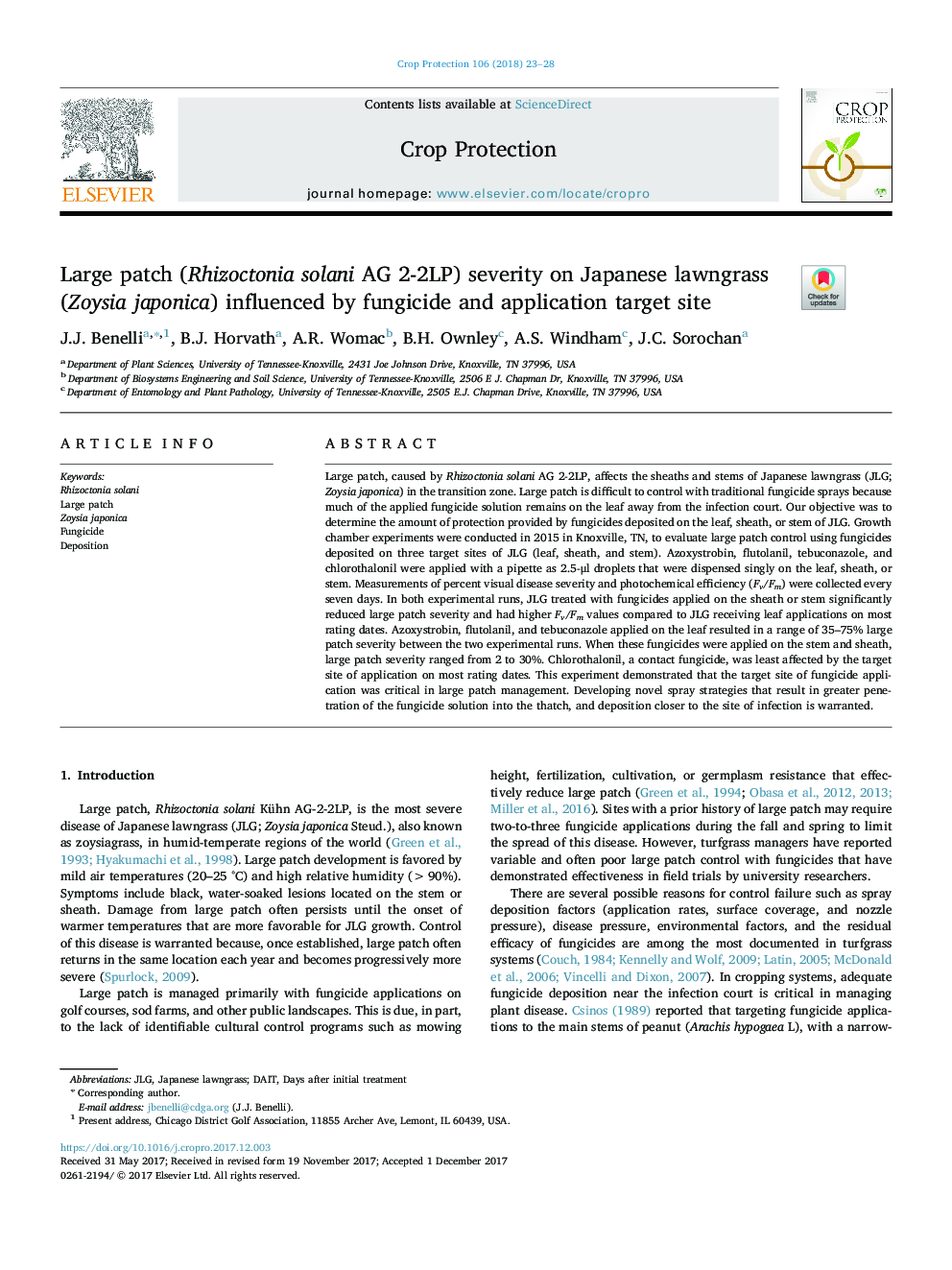| Article ID | Journal | Published Year | Pages | File Type |
|---|---|---|---|---|
| 8878234 | Crop Protection | 2018 | 6 Pages |
Abstract
Large patch, caused by Rhizoctonia solani AG 2-2LP, affects the sheaths and stems of Japanese lawngrass (JLG; Zoysia japonica) in the transition zone. Large patch is difficult to control with traditional fungicide sprays because much of the applied fungicide solution remains on the leaf away from the infection court. Our objective was to determine the amount of protection provided by fungicides deposited on the leaf, sheath, or stem of JLG. Growth chamber experiments were conducted in 2015 in Knoxville, TN, to evaluate large patch control using fungicides deposited on three target sites of JLG (leaf, sheath, and stem). Azoxystrobin, flutolanil, tebuconazole, and chlorothalonil were applied with a pipette as 2.5-μl droplets that were dispensed singly on the leaf, sheath, or stem. Measurements of percent visual disease severity and photochemical efficiency (Fv/Fm) were collected every seven days. In both experimental runs, JLG treated with fungicides applied on the sheath or stem significantly reduced large patch severity and had higher Fv/Fm values compared to JLG receiving leaf applications on most rating dates. Azoxystrobin, flutolanil, and tebuconazole applied on the leaf resulted in a range of 35-75% large patch severity between the two experimental runs. When these fungicides were applied on the stem and sheath, large patch severity ranged from 2 to 30%. Chlorothalonil, a contact fungicide, was least affected by the target site of application on most rating dates. This experiment demonstrated that the target site of fungicide application was critical in large patch management. Developing novel spray strategies that result in greater penetration of the fungicide solution into the thatch, and deposition closer to the site of infection is warranted.
Related Topics
Life Sciences
Agricultural and Biological Sciences
Agronomy and Crop Science
Authors
J.J. Benelli, B.J. Horvath, A.R. Womac, B.H. Ownley, A.S. Windham, J.C. Sorochan,
